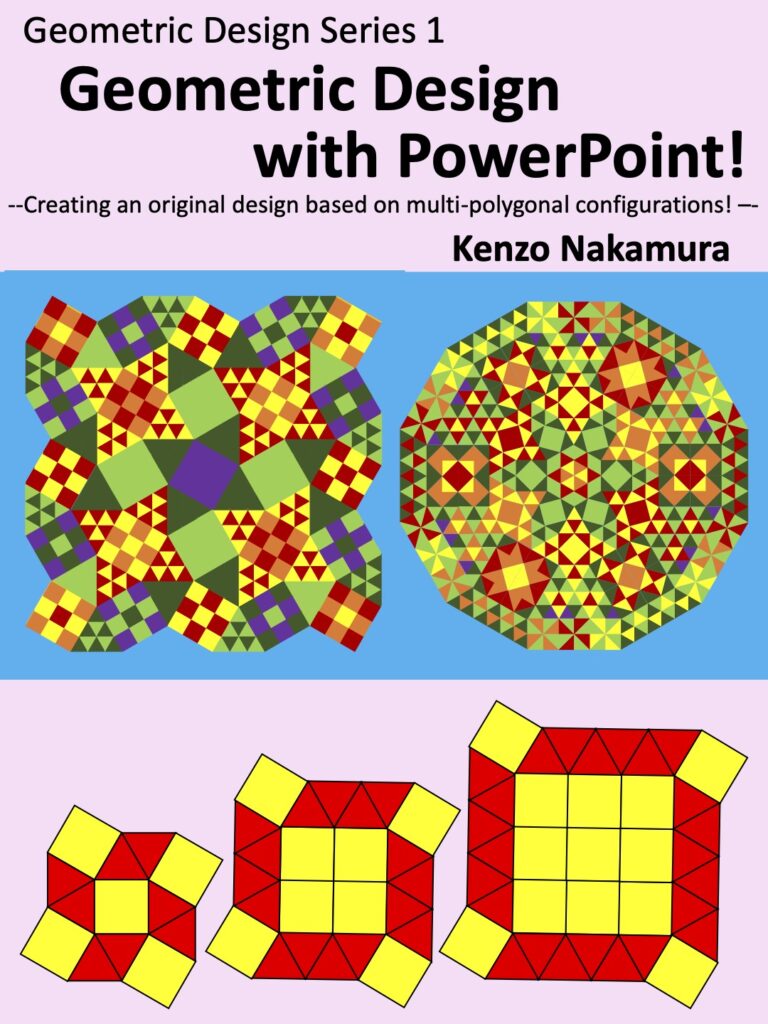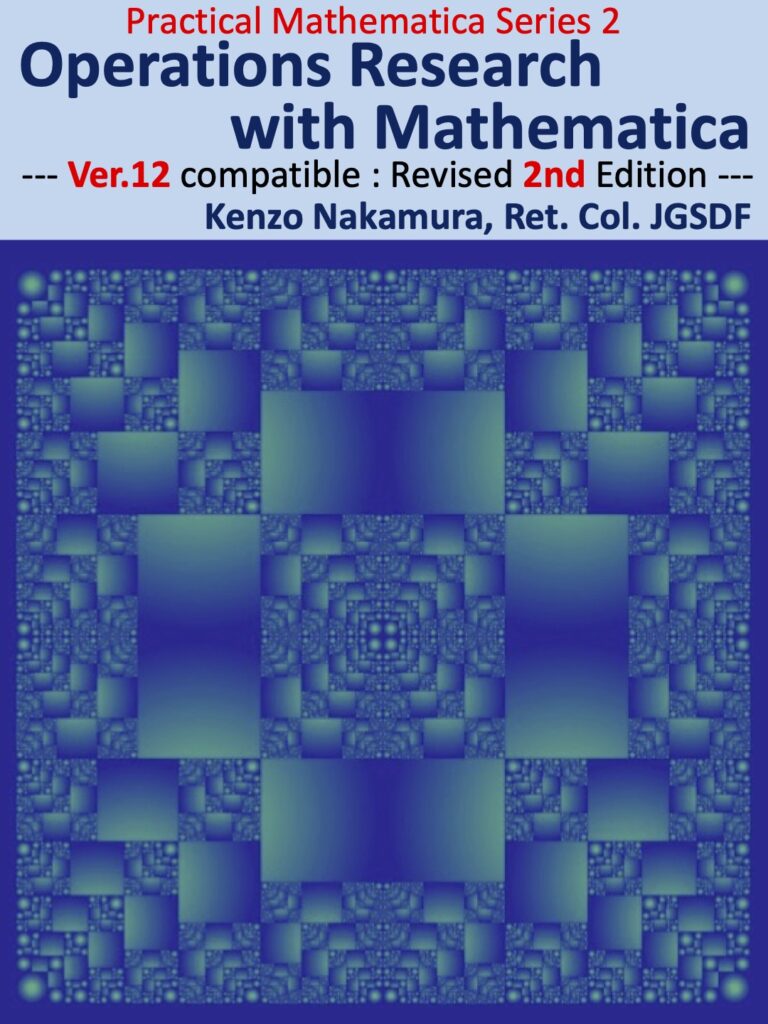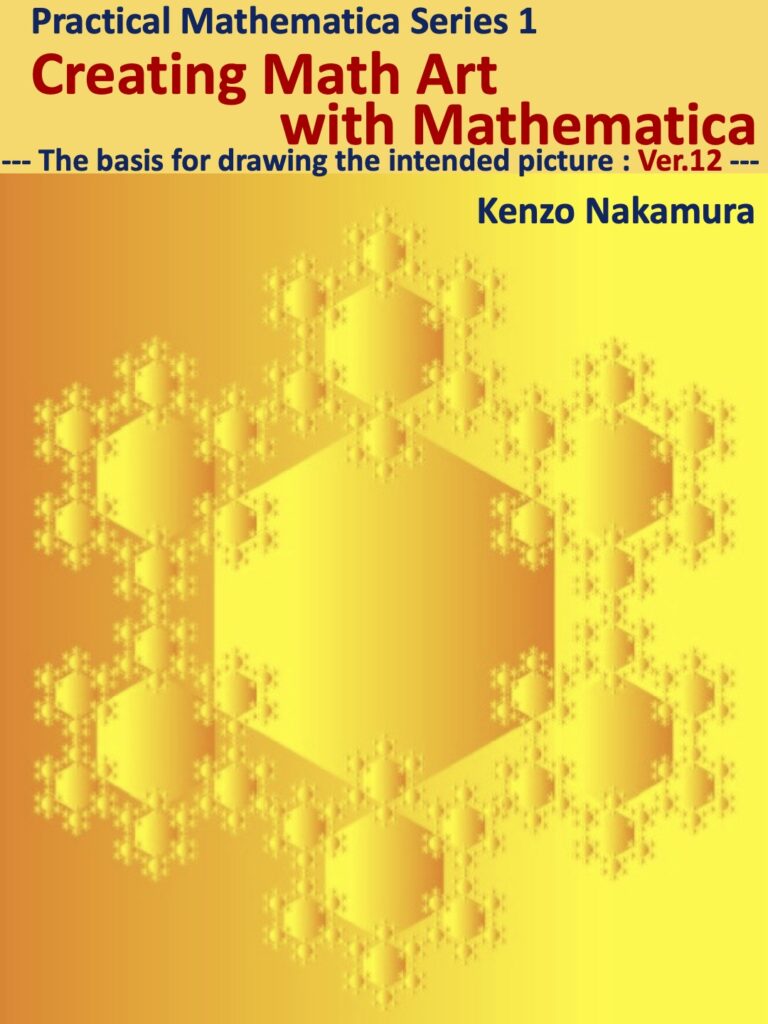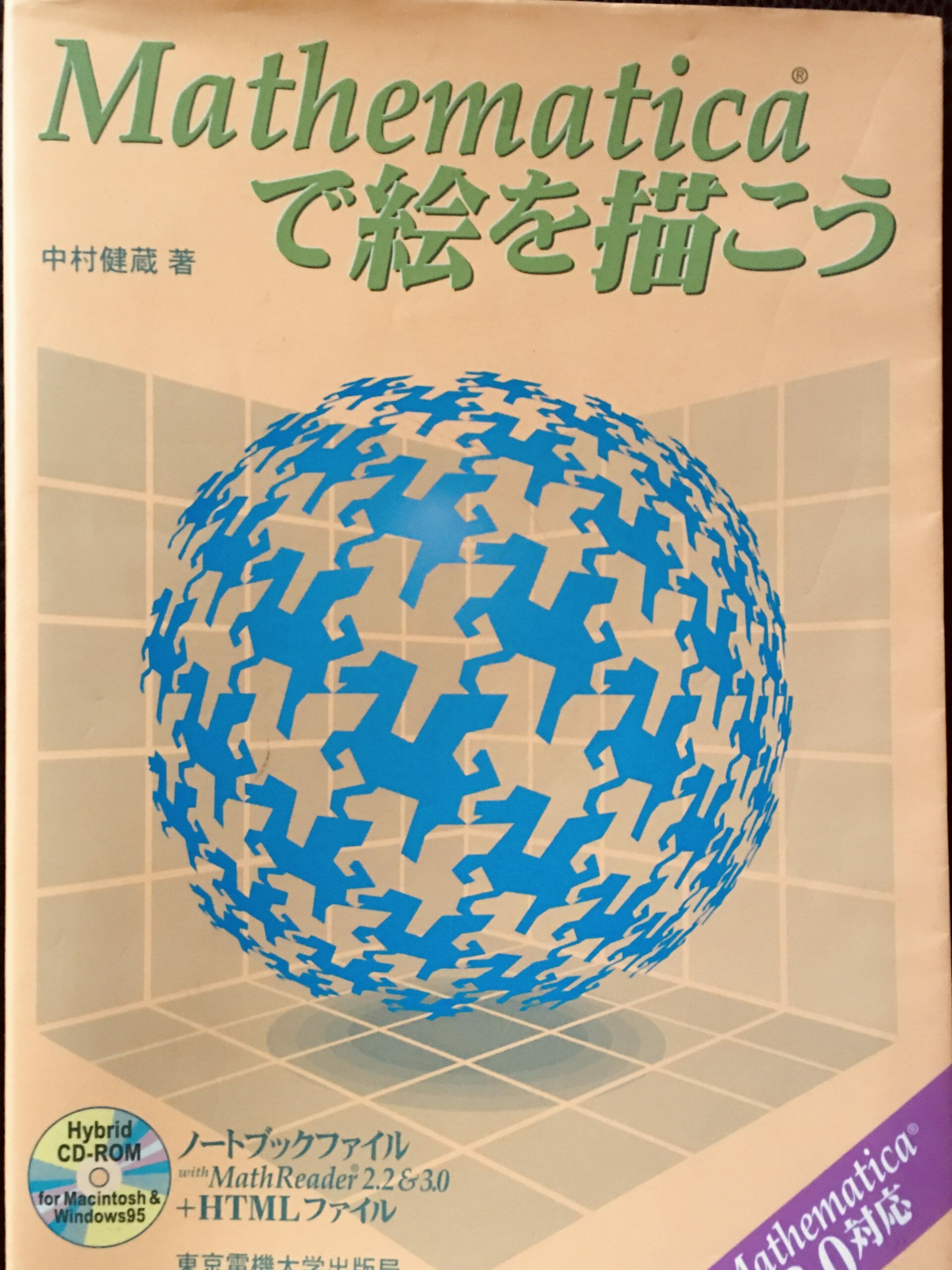Abstract: You can download the “Mathematica OR” notebook file as well as introduce the author’s published books.




Geometric Design with PowerPoint!
The geometric design targeted in this book is the combination of polygons itself. The combination of polygons can be made infinitely, but the degree of freedom in design is limited by geometric constraints. I wondered if I could design more freely and could find a way to do it. It is to do an internal dividing into a polygon. And by extending the internal dividing from geometric to design, we were able to find a way to dramatically increase the degree of freedom in design.
With this book, you can create an original pattern by applying the basic knowledge of geometry. Even those who are not interested in geometry can learn the basic knowledge of geometry and the properties of polygons while reading this book, and I wrote it so that it can be used for creating original patterns.
Then, I will explain how to use PowerPoint to create original patterns, and I will also make it possible to download PowerPoint file for creating original patterns for free, so please try it. By providing the PowerPoint file, I am proud that I was able to provide not only the methodology but also the tools for actually using it to many people in the environment where PowerPoint can be used. Please take advantage of it.
Table of Contents
Chapter 0: Structure and usage of this book
Chapter 1 Tiling
Chapter 2 Internal dividing
Chapter 3 Application of internal dividing to Archimedes tiling
Chapter 4 Creation of an original pattern using a regular dodecagonal hierarchical structure
Chapter 5 Creating an original design using PowerPoint
Chapter 6 Repeating internal dividing and creating original patterns
Chapter 7 Creation of original pattern by expanding internal dividing
Chapter 8 Tips for creating original geometric designs
Free Download: PowerPoint file
You can download the PowerPoint file introduced in Chapter 5 of the book. The content is basic internal dividing 3. Please try to make geometric patterns and experience those possibilities. A password is required. Please refer to it in the book.
Operations Research with Mathematica

Summary:
In this book, I explain the basic theory and calculation programs for using various operations research (OR) techniques with Mathematica.
This book not only gives you a general view of OR, but also allows you to use your notebook to perform actual calculations. Therefore, it can be used for calculation of various university subjects and graduation research, so if you are in an environment where you can use Mathematica at a university, I would like you to use it. I also believe that it will be the basis for those who are aiming for a Master of Business Administration (MB A) and those who perform big data analysis.
I have confirmed the operation with Mathematica Ver.12.
- Table of contents
- Chapter 1 Introduction of Mathematica and a simple usage example
- Chapter 2 Probability and Statistics
- Chapter 3 Simulation
- Chapter 4 Demand Forecast
- Chapter 5 Differential Equation Model
- Chapter 6 Inventory Management
- Chapter 7 Queuing Theory
- Chapter 8 Linear Programming
- Chapter 9 Dynamic Programming
- Chapter 10 Game Theory
- Chapter 11 Decision Making Theory
- Chapter 12 Visualization of calculation results
<<About Revision 2.1>>
I wanted as many people as possible to read this book, so I made it available on Kindle Unlimited. In other words, the price of this book so far was 30 euros, but now it is 10 euros. Also, Kindle Unlimited members can read this book for free. I will be glad that many people will read it.
Please see the following Web page for downloading the Notebook of this book.
Creating Math Art with Mathematica
Summary: This book, which was published by the Tokyo Denki University Press in 1997, has been made compatible with Mathematica Ver.12, and the content has been further revised. For example, the cover of this book is my work of the same name with the image of diamond dust. Not only the creation program of this work, but also the extraction to an external file and the handling by illustrator are explained concretely. You can also download the programs (notebooks) on the website.
- Table of contents
- Chapter 1 Introduction to Graphics Primitives
- Chapter 2 Various Ways of Expression
- Chapter 3 Creating various shapes
- Chapter 4 Recursive Shapes
- Chapter 5 Creating wallpaper patterns
- 6. Seven Treasures and Mosaics
- Chapter 7 Creating GIF Animation scan for web pages
- Chapter 8 Creation of applied works
<<About Revision 2.1>>
I wanted as many people as possible to read this book, so I made it available on Kindle Unlimited. In other words, the price of this book so far was 30 euros, but now it is 10 euros. Also, Kindle Unlimited members can read this book for free. I will be glad that many people will read it.
Please see the following Web page for downloading the Notebook of this book.
You can see my Math Art Works
Publish E-book in 10 languages!
The author has published his book in 12 languages. He has used this experience as an example in writing this book.
The content of this book is about how to translate your manuscript from your native language into multiple languages, proofread it, and publish it on kindle, even if you only understand your native language.
The target audience is: 1) people who want to publish their own books in multiple languages, 2) people who want to proofread books in their native language as a side job, and 3) people who want to publish other person’s books in multiple languages.
The table of contents is as follows
Chapter 0: Languages and the Current State of AI Translation
0.1 Current status of languages in the world
0.2 Current Status of AI Translation
0.3 To which language should be translated?
0.4 Multilingual translation procedure and chapter structure
Chapter 1: E-publishing on Kindle
1.1 Proofreading of your manuscripts
1.3 Precautions for multilingual translation
Chapter 2: Reconstructing a pre-translate manuscript and checking English by DeepL
2.1 Reconstruction for multilingual translation
2.2 English Confirmation by DeepL
Chapter 3: Translation into many languages, proofreading and confirmation
3.1 Preparation of the translation by DeepL
3.2 Translating the whole document file
3.3 Confirmation and proofreading
Chapter 4: Kindle Sales Strategy
4.1 How sales work on K D P: Unlimited read
4.3 Changes to the content according to your sales strategy
4.4 Other publishing-related know-how
5.1 Considerations: AI unemployment
5.2 Consideration: the idiot camera and the professional photographer
5.3 New language directions with A I translation
5.4 Proposal for a business model of multilingual publishing via the Internet and AI
Quilt design evolving in geometry
Description: Starting with tiling about the good affinity between patchwork quilts and geometry, we explain the creation of original designs using internal division.In addition to the internal division from Part 4, it explains that the range of design is expanded further by the use of hierarchy.Published in 2019 by Kindle DP and Rakuten Kobo.
- Index:
- 1st Geometric design evolving in internal division
- 2nd Evolving Geometric Quilt Design
- The 3rd Application to Geometric Quilt Design by Various PolygonAl Arrays
- 4th Structure of the Square
- 5th Square of Diversity
- 6th Hierarchical Secrets




